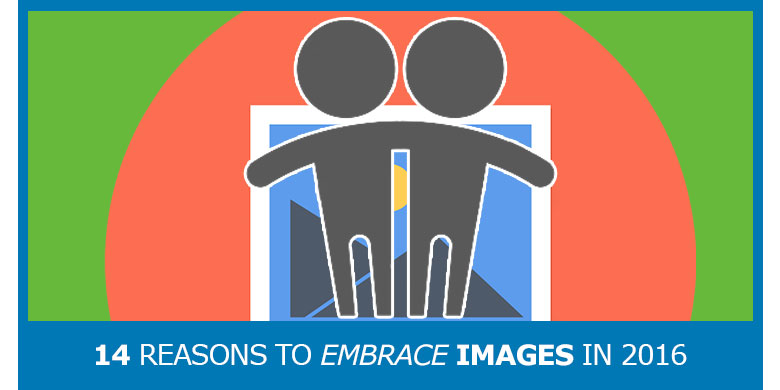Visual content marketing is the way of the future, this much is certain. One must only look around them in public to see why this is true. People are so keyed into whatever is on their tablet screen or smartphone screen that they rarely even notice what is around them, so engaged are they by what they see. Reasons for this phenomenon are simple ones, people are drawn to catchy and flashy content that they can digest within a few moments to a minute or two at most in general. While some might follow a post that is sure to be a 5 minute read, most don’t have that kind of time or desire to be in one place that long these days.
Life has gotten more busy, people are expected to multi-task more and as a result, the content being aimed at these people must also be rich in brevity and humor, something that will capture their tiny bits of time without imposing too much on them in terms of commitment. This is why apps like Snapchat have caught on in such a big way, their tiny snippet videos and photos are engaging and don’t take a lot of valuable time. What can we learn about this as marketers? Images and videos that say as much as possible, in as short a time as possible, which are also happy, funny or pleasant and also don’t expect much from the person are the way to go for advertising purposes.
If you’re still not totally convinced that images carry a massive amount of power in this largely visual-inspired audience the world is packed with today… we have some stats that will help back this up and might just surprise you to learn as well. All of this goes a long way to help you market smarter and use less time and energy for more sales because you know your target group and what they want the most.
14 Reasons to EMBRACE IMAGES in 2016
- People LOVE color. They’re drawn to colorful visuals much more than black and white ones it makes them 80% more willing to read the content which contains the color! It increases a reader’s attention span by 82%, and makes an impression that is 39% more memorable. It also improves brand recognition by 80%.

- People LOVE color. They’re drawn to colorful visuals much more than black and white ones it makes them 80% more willing to read the content which contains the color! It increases a reader’s attention span by 82%, and makes an impression that is 39% more memorable. It also improves brand recognition by 80%.
- Visuals are better. 40% of people respond better to to visual information than plain text. In a survey conducted by CMO Council in 2015, half the respondents indicated that the use of photography and video is critical to marketing strategies even above illustrations and infographics. 50% of these people believed that this would only grow in time in regard to importance, mostly within video.
- Infographics still work. Infographics work based on human nature itself, because people are highly visual creatures, and 30% of our brain is devoted to processing visual information. In contrast, 8% goes to touch, and 3% to hearing – meaning that our visual acuity and attention given to visuals is quite remarkable. Processing efficiency means we are able to process images much faster than plain text which is great when you consider that people only read about 20% of the text on any page.
- Pictures improve memory retention. Psychology tells us about the concept of the picture superiority effect, which is the fact that people are far more likely to recall concepts which are presented as pictures instead of words. Hearing information results in a 10% recall of the information 3 days later, but when an image that is relevant is paired with the same information, 65% of people retained the information 3 days later.
- Images increase engagement. There is a degree of interaction expected when a person clicks on a photo as they wonder where it will lead them. Some are even interactive requiring more than the push of a button by the user to see the content. This encourages participation and keeps the reader visually engaged with the content.
- Content with images is viewed more. People love photos, we’ve said that before but we’ll reiterate it again and again. If text comes with an image, it’s far more likely to be read than those without any at all. 94% more views come from images with relevant content than content without any images.
- Sell more with video. Shoppers who get the chance to watch a video while shopping about the product or service are nearly twice as likely to purchase than those who do not watch one. Those who access the shopping via mobile are 3 times as likely to view a video than those on desktop.
- Open rate of emails with “video” in title is much higher. 19% boosts in open rates occur just by using the word video in an email subject line, and produces click-through rates of 65%. It reduces unsubscribe rates by 26% as well.
- Video is on the rise. It is expected that by 2017, a mere year from now – fully 74% of all internet traffic will be video which means incorporating it must happen now, especially knowing that 65% of video viewers watch more than 75% of the whole video.
- Video views daily boost rapidly. In a given period, namely a 7 month window between April and November of 2015, Facebook reported a spike in their average daily video views from 4 billion per day to 8 billion. Yeah, billions… that’s a LOT of video views, and though change in this area usually takes a bit longer to measure, it seems to be moving much faster, measurable in terms of months instead of years.
- Infographics again? Yes again! Because infographics really are just that great. They are liked and shared on social media more than any other type of content. 3x more, so if you’ve created a great infographic and marketed it well, you should see a massive amount of shares. This even goes toward people who follow directions using illustrations versus those without. Those with the picture to help, just as with infographics, were shown to do 323% better.
- Articles with multiple images work. Articles which contain an image every 100 words or so tend to get double the number of social shares than articles which had fewer.
- Instant images on the rise. 52% of teens use Instagram and 41% of teens use Snapchat also. Snapchat has 100 million daily users, 65% of which upload photos on that app. Instagram has grown to more than 400 million in September 2015.
So what does this mean?
Images and video, even infographics are the way to go for the future of marketing in a world that is dominated by highly visual people, with little time and even smaller attention spans.







